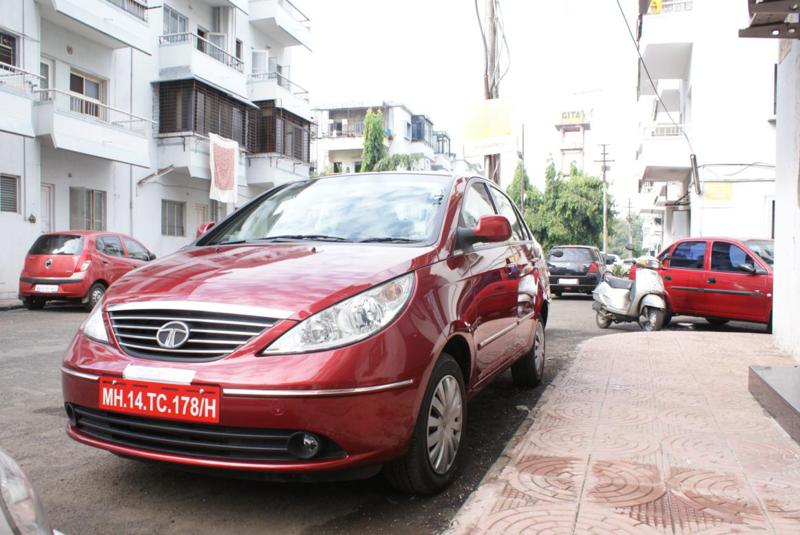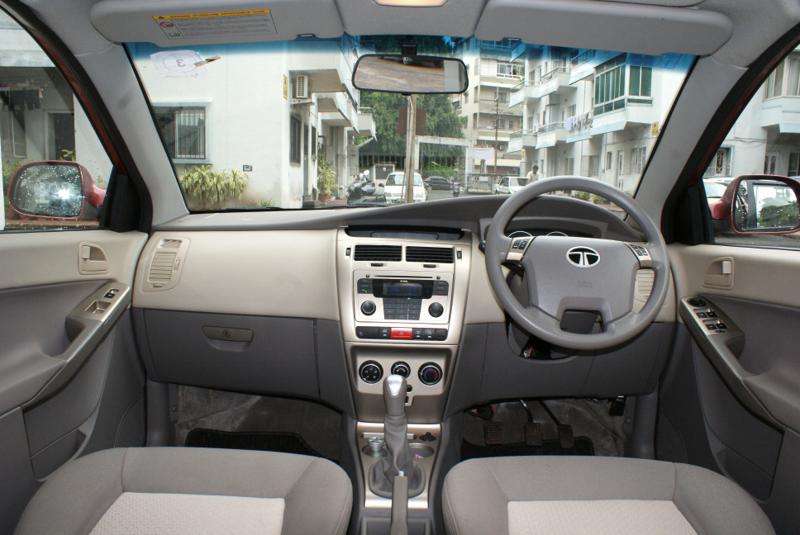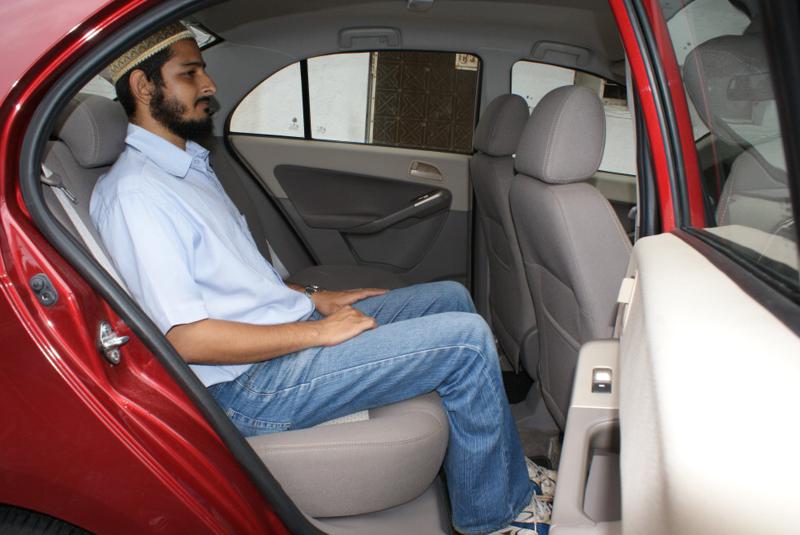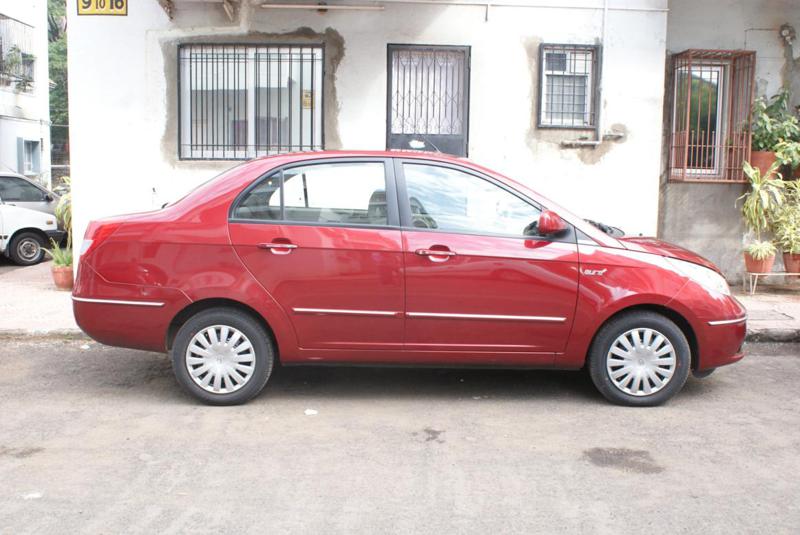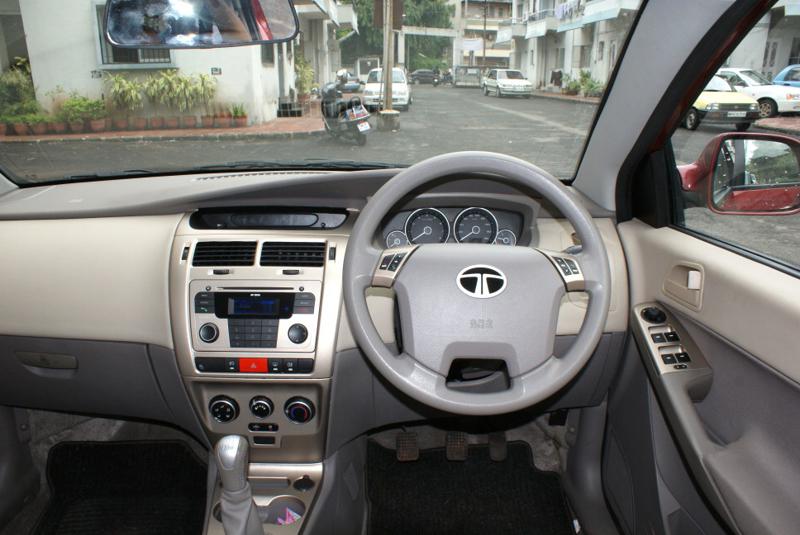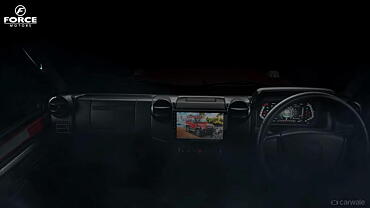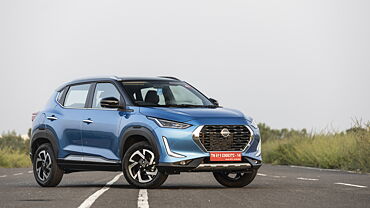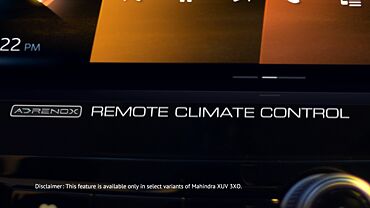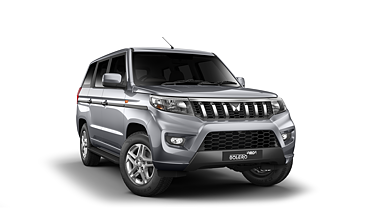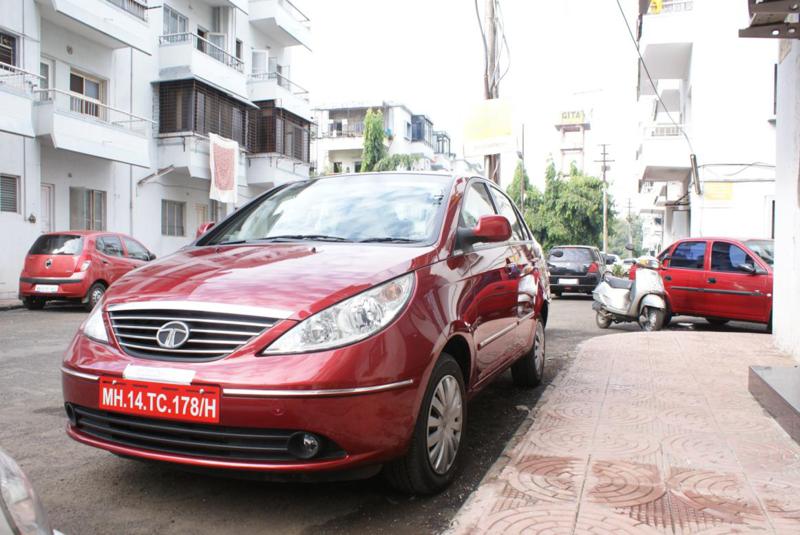
Opening
What is the first impression that comes into your mind when you think of Tata cars? Most would say a taxi. But one look at the Manza and all those impressions will be out of the window. Instead you start to think of Style, Luxury and the word BIG comes to your mind - especially when you have a look at the boot. It looks like a proper Sedan. It may not be perfect but by no way does it look like a boot that has been put onto a hatchback.
And all that’s even before you have a look at the interiors. The car is loaded with safety and luxury features that have probably made its entrance for the first time on any Tata product. Even the Base Variant comes with AC, Tilt Power Steering, Front Power windows, Central Locking, Rear Armrest and, yes, even a 2 DIN music system!
The Vista, the Nano and now the Manza have shown how Tata has matured over the years. Result of about 50 lakh KM of testing between the Vista and the Manza. Quality, finish and refinement is far superior to any other Tata product to date, even the Vista. The Manza is assembled alongside the Linea. The quality of paint and parts (sans a few which have obviously been sourced from an older product) are hence similar to the more expensive Linea and of very good quality.
Appearance Exterior
The Manza has a very elegant poise. The clean lines, steep Windscreen angle and loads of chrome all around add to its character. On the top end model, you have chrome above the Radiator Grill, on the Bumpers, on the side moldings, the door handles and even above the back number plate.
The squared rear makes it look much larger then it actually is. The longish three-barreled headlight is inspired from the Vista but not completely taken off it. The famous Indica radiator smile now has more straight lines and looks kind of like an inverted trapezium. Like the Indica, the side indicators are neatly placed just below the OVRMs. The shoulder line on the car is also more pronounced.
The 15” wheels look good and fill up the Wheel Arches nicely. The large wheelbase coupled with the 15” wheels give the Manza good handling manners.
The Manza is 4413 mm long as compared to 4160mm for the Swift Dzire, 4282mm and for the Ford Fiesta. Width and Height is also more than its rivals with 1703mm and 1550mm for the Manza, 1690mm and 1530mm for the Dzire and 1686mm and 1468mm for the Fiesta respectively. Ground clearance is about 165mm and the bottom never scraped the surface anytime during the 350 odd kilometers that I had the car with me. Wheelbase is also the largest at 2520mm. Only the Logan compares favourably to the Manza in dimensions.
Appearance Interior
Interiors are where the Manza scores highly. The cabin feels airy and there is a sense of space. In fact, interior space is probably one of the main USPs of the Manza. The large windscreen and beige interiors accentuate the space. The A pillar is small and does not restrict much vision, though at times on the ghats while turning right I was not able to spot the on coming cars.
There is only one word for the amount of room at the rear 'Unbelievable'. The wheelbase is now 50mm longer (and a full 130mm longer than the Dzire) and the space is visually evident. (On the drive to Mahabaleshwar, a family from a Honda CRV took turns to sit in every seat of the car and they were truly impressed, especially with the amount of legroom and headroom.) Even with the front seat in their fully back position, the rear seat passengers legs don't touch the front seat. The angle of the seats are also perfect and make them the best place in the car to be in. The rear can easily accommodate 3 passengers comfortably and the rear armrest with built in glass holders gives the car an expensive look.
The Boot is massive. At 460 litres, Tata claims it is the largest in its class.
The front seats are pretty firm, and they are quite large and there is plenty of space for the elbows on both sides. Front seat travel is also quite generous, so is the amount of steering wheel height adjust and driver seat height adjust too. Lumbar support has two stages, in and out, and didn't do the trick for me (having been used to the kind of lumbar support the Octavia offers). However like many other features, it’s a first for a car with this price tag.
With the Manza, Tata has also shown that safety is on their minds. The Manza is equipped with ABS, Dual Front Airbags, Collapsible Steering Column etc. The front Passenger airbag can also be turned off if it’s not required.
Plastics used are of high quality and totally the opposite of what you would expect from a Tata product. The feel of the Dashboard is awesome and I particularly like textured feel and the slightly Grey colour near the windscreen which does well to block the sun’s reflection off it into the driver’s eyes (apart from the Front Defogger Vents which are clearly visible). The two tone fabrics, which are available across all variants, also look and feel very good.
Storage space is pretty good. The door pockets are not too big but each was able to hold two 500ml aerated water bottles. Seat pockets also are just adequate enough to hold a few magazines and some biscuits at most. However the Glove Box is very spacious. It could easily hold my laptop. Tata has put some very nice thought into it. The glove box is lit (though not cooled like in the Fabia and some other cars) and has a slot where you can keep your pen and visiting cards. There is also a Sliding tray under the Front Passengers seat.
A 2 DIN music system from Blaupunkt, 4 speakers and 2 tweeters come standard across all the variants. The Aura also gets the Blue5 Bluetooth System - it can pair upto 5 phones, however can only be used with any one phone at a time. The system has a full keypad for the phone and along with making and answering calls, you can also stream music via a bluetooth enabled device. Also on the Aura there is a provision for an AUX and USB input (Though the ports are covered by a cheap piece of rubber which we have doubts on how long it would stay there). The music player can be controlled via a small remote or via the buttons on the Steering Wheel. You can also answer and end calls via 2 buttons on the steering wheel. The buttons however felt small and made of very thin rubber and I kept switching tracks unknowingly when I used the horn. The steering wheel though is large and has a big hornpad which feels good to hold and use.
The OVRMs provided did their function well. View from them was adequate and the Electrical Adjustment knob for the OVRM felt very precise. The mirror's glass moved slowly and precisely and it was possible to set the exact position that you wanted with relative ease. The power window switches were also acceptable and the driver side glass has a one touch auto down function (It does not come up automatically too). Tata has used a dull gold paint on it but the paint finish there leaves a lot to be desired.
The switch to lock the windows (so that other passengers cannot operate it) is electric as is the switch for the AC and the Air Circulation position. Motors now activate the flap (to control outside air entering the cabin or inside air being re-circulated) rather than the use of cables. Cooling of the AC is good (we only got to test it in chilly weather - how it will perform in the extreme summer heat is yet to be seen) although the blowers could have been a bit more powerful.The gear knob is wrapped in quality leather and feels good to hold and use.
The 4 dial speedo console has white backlighting and is small and classy. Looks like one you could maybe see on a supercar (Is Tata inspired by its latest Jaguar and Land Rover Acquisition?). The dials are about half the size you would see on a normal car, with the temperature and fuel gauge being located at the ends and of a smaller size than the Speedometer and the Tachometer. The dials are outlined which chrome (like on the Swift’s). This took me by surprise the minute I entered the car. However, the small odometer does take a while to get used to. The good news is that the meters are back where they belong, in front of the driver!
The turn indicator lights are also small. However the Multi Information Display which provides details like Total Mileage, Instantaneous Mileage, Range to empty, Clock and Outside temperature is quite large. The font though looks like the ones you see on small kid’s digital watches!
Another first from Tata is the Critical Rev limiter. Instead of the normal Red band on the Tach, the needle itself turns red on reaching 5000 RPM in the Diesel and 6000 RPM on the Petrol.
The indicator stalks require more than a slight tap to operate. They need to be pushed up or down quite firmly. The wipers do a pretty good job and can be operated at 7 different speeds (there are 5 Intermediate positions). While using the spray to clean the glass, the wiper makes one extra stroke 5 seconds after stopping the spray to clean up the residual water droplets. While returning from Mahabaleshwar in dreadful rain (people had parked their cars at the side of the road) the wiper operating at their highest setting did a good job. The front and rear fog lamps also helped. Doors require a good push to close but the outside door handles look really good. Wish the same could be said for the inner door handles though – looks like these were being sourced from older products.
Cabin noise is virtually non existent due to the excellent insulation and provided by Tata. Even at high speeds the Cabin is very silent. The only thing that can be heard is a slight tyre noise. This is completely different from the loud engine noise that is evident on the Linea and the Punto. The pedals like the Vista are placed closely together and there is no Dead Pedal. Wish Tata hadn't ignored that feature.
Just to list the seemingly endless number of features that are available on the top end Aura + model, it is equipped with ABS, 2 Front Airbags, Air Conditioning, Tilt adjustable steering with a Collapsible Steering Column, Seat Belt with Pretensioners, Multi Information Display, a 2 DIN music system with Bluetooth and AUX / USB inputs, 4 Speakers with 2 Tweeters, Steering Mounted Audio Controls, Central Locking with Keyless Entry, Driver Seat Height Adjust, Front Seats Lumbar Support, Dual Tone interiors, Dual tone Fabrics, 2 Trip meters, Front and Rear Fog Lamps, Electrically adjustable OVRM's, 4 Power windows with Driver Side Auto down feature and large 15” wheels.
Another couple of Excellent Safety Features are that if the seat belts (Driver Side only) are not worn, once a car reaches 15kmph a buzzer starts ringing which is irritating and hard to ignore. The doors lock automatically upon reaching 20kmph. You can stop the car and unlock the doors, reach 20kmph again and the doors will once again lock themselves.
Performance Drive
The diesel engine on the Manza is the same that we are beginning to see on many cars in India. Yes, we are talking about Fiat's 1.3 Multijet or Quadrajet as Tata calls it. It must be noted that though the same powertrain is used on many cars, each manufacturer has the engine in a different state of tune and refinement. In my view, Maruti-Suzuki has done the best job with it followed by Tata with the Manza. I guess everyone has beaten Fiat in their own game (compared to the Swift and the Manza, the Punto seems to lack power and is very noisy!).
The 1.3 Quadrajet on the Manza produces 90PS@4000RPM (4PS higher than on the Linea). Torque is rated at 200NM @ 1750-3000RPM (both figures easily beating the DZire and the Fiesta).
Even though the Manza is on the heavier side at 1210kgs, its power to weight ratio at 74.3PS/ton is much higher than the DZire (67.5PS/ton), the Fiesta (59.1PS/ton) and even the Linea (66.6PS/ton) hence it takes care of the extra weight with ease. The engine is pretty quiet - trust me, I had a 2003 Octavia and it sounded like a truck - and feels highly refined too. Above 2000RPM it feels like a little rocket. Hit the throttle a little and it zooms past the vehicle in front. Climbing up the Katraj and Wai Ghats was a breeze and we did it in such quick time that we didn't realize the climb section was already over.
The 1.4 Safire petrol unit produces 90PS@6000RPM and has Torque figures of 116NM@ 4750RPM. It has a 'Continuous Variable Cam Phaser' as Tata calls it along with an intelligent port resizing which translates into better power delivery and higher fuel efficiency. The engine is quiet, pretty Rev Happy and has a very linear acceleration curve.
I felt the steering to be pretty precise and the car went wherever I wanted it to. Understeer does creep in if you are accelerating in a corner (did encounter a few on the ghats) but it’s relatively easy to overcome. Body roll is minimum and does not overwhelm you at any point. The 185/60 R15 Bridgestone tyres provided plenty of grip even in wet and treacherous conditions. Potholes and Speed Breakers didn't create a hassle and the car glides over them without shaking the passenger too much. This is by far the best handling Tata car ever made and also gives the other cars in its segment a good run for their money.Gear Shifting is precise and though they are not short throws, they slot into place perfectly.
Thanks to the tall gear ratios, the car returns very respectable mileage figures. In the City with the Aircon on at all times the car returned 14.1 kmpl. On the highways at 120kmph and 2400 RPM the instantaneous fuel indicator was hovering between 21.2kmpl and 23.8 kmpl. The overall mileage for around 350kms (City, Highway, Ghats sections all included, and AC on at all times) was 16.1kmpl.
Where the Tata Manza does take a beating though is the Turbo Lag. Below 1500 RPM absolutely nothing happens. Power starts to slowly creep in after 1700RPM and one can only really feel the boost once past the 2250RPM mark. This can become tricky if you stop on a climb and the clutch needs to be worked hard to build up the revs. Also you don't want to be overtaking anywhere below 1800RPM. Use the correct Revs and the car handles like a dream.
In the performance test (wet roads thanks to the rain) with the A/C switched off the car did 0-40kmph in 3.1 seconds, 0-60kmph in 7.2seconds, 0-80kmph in 11.5seconds and touched the 100kmph mark in about 17.5 seconds. Needed a few runs though as the wheels kept spinning at the start.
The accelerator is controlled by the Drive-By-Wire system (where a Rheostat sensor converts the amount of accelerator being depressed and passes the information to the ECU which tjem coverts the electrical signals into mechanical motion and it regulates the amount fuel going into the engine).
The Manza comfortably cruises at 140kmph and hit 160kmph though we were able to hold it for only a couple of seconds and felt it had could have done better if the road conditions permitted. Breaking is probably one of the best in its Class again and she comes to a halt from 100kmph in no time. Slam the brakes and the Manza comes to a halt quickly and in a perfectly straight line and you never feel the car going out of control (ABS doing a wonderful job).
Tech Specs
| Technical Specifications | |
| Make | Tata |
| Model | Manza |
| Variant | Quadrajet Aura + |
| Ex-Showroom Price (Pune) | 6,63,381 |
| AC | Yes |
| Power Windows | Yes |
| Power Steering | Yes |
| ABS | Yes |
| Airbags (D/P) | Yes |
| CD Player / Bluetooth | Yes |
| Length (mm) | 4413 |
| Width (mm) | 1703 |
| Height (mm) | 1550 |
| Wheelbase (mm) | 2520 |
| Ground Clearance (mm) | 165 |
| Kerb Weight (kgs) | 1210 |
| Boot Space | 460 |
| Displacement (cc) | 1248 |
| Power (PS@ RPM) | 90 @ 4000 |
| Torque (NM@ RPM) | 200 @ 1750 |
| Min turning Radius | 5.1 |
| Tyres | 185/60 R15 Tubeless |
| Fuel Tank Capacity | 44 |
Features
| Features | Aqua | Aura + | Aura ABS |
| Air Conditioner | Yes | Yes | Yes |
| Power Steering | Yes | Yes | Yes |
| Airbags | Yes | Yes | Yes |
| ABS | No | No | Yes |
| Immobiliser | Yes | Yes | Yes |
| Central Locking | Yes | Yes | Yes |
| Keyless Entry | No | No | Yes |
| Doors open and Seat Belt Not worn Buzzer | No | No | Yes |
| Front Fog Lamps | No | Yes | Yes |
| Rear Fog Lamps | No | No | Yes |
| Rear Defogger | Yes | Yes | Yes |
| Adjustable Steering Column | Yes | Yes | Yes |
| Tachometer | Yes | Yes | Yes |
| Factory Fitted Stereo with Bluetooth | No | Yes | Yes |
| Height Adjustable Driver Seat | No | No | Yes |
| Adjustable Lumbar Support | No | No | Yes |
| Steering Wheel Audio Controls | No | Yes | Yes |
| MID | No | Yes | Yes |
| 2 Tone Beige Interior | No | No | Yes |
Competition All Specs
| Specifications |
Tata
Manza |
Maruti Suzuki
Swift DZire |
Ford
Fiesta |
| Variant | Quadrajet Aura + | Zdi | 1.4 Sxi TDCi ABS |
| Ex-Showroom Price (Pune) | 6,63,381 | 6,75,315 | 8,01,940 |
| AC | Yes | Yes | Yes |
| Power Windows | Yes | Yes | Yes |
| Power Steering | Yes | Yes | Yes |
| ABS | Yes | Yes | Yes |
| Airbags (D/P) | Yes | Yes | Yes |
| CD Player / Bluetooth | Yes | Yes | Yes |
| Length (mm) | 4413 | 4160 | 4282 |
| Width (mm) | 1703 | 1690 | 1686 |
| Height (mm) | 1550 | 1530 | 1468 |
| Wheelbase (mm) | 2520 | 2390 | 2486 |
| Ground Clearance (mm) | 165 | 170 | 168 |
| Kerb Weight (kgs) | 1210 | 1115 | 1150 |
| Boot Space | 460 | 440 | 430 |
| Displacement (cc) | 1248 | 1248 | 1399 |
| Power (PS@ RPM) | 90@ 4000 | 75@ 4000 | 68@ 4000 |
| Torque (NM@ RPM) | 200@ 1750 | 190@ 4000 | 160@ 2000 |
| Min turning Radius | 5.1 | 4.7 | 4.9 |
| Tyres | 185/60 R15 Tubeless | 185/70 R14 Tubeless | 175/65 R14 Tubeless |
| Fuel Tank Capacity | 44 | 43 | 45 |
Conclusion
The Manza is loaded with more features than its rivals and is priced well below them. The Manza is a whole 1.7 Lac cheaper than the Linea, has the same features, the same engine and is built on the same assembly line. Plastics quality, ride, handling and performance is also really good. So suddenly the Linea doesn't seem to make any sense. The Manza is definitely loaded with more features when put alongside the DZire (which is priced more or less the same as the Manza.) The Linea does however have a bit more style and brand name.
All this considered the Manza is definitely the most Value for money car in the segment. It is also by far the most spacious with space that could probably be expected from a Camry or an Accord. Tata cars are known to be very long lasting and the sales figures of the Indica/Indigo and the mileage of the Indicas does prove that.
Yes, there is a lot of scope for improvement but the Manza's Engine and build quality is leaps and bounds more refined, has better finishing, and an overall better product than any other Tata car. The Manza comes with a 2 Year / 75,000 kms standard warranty which can be upgraded to a 4 year / 1,50,000 kms warranty at a nominal price. At the price and the features provided, its rivals (especially the Linea and the Fiesta) will be a worried lot.



